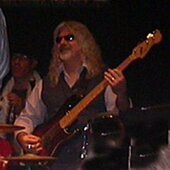Hey folks, I have an old orchestral project on a backup drive that was created with SONAR and Kontakt 3 & 4. I have those libraries backed up as well, but no longer have the plug-in DLLs for the 'Kontakt3 8 out' and 'Kontakt4 8 out' synths.
So of course when I load the project with CWbBL, it gives the expected errors, i.e., that the instances of the above synths are missing, etc. The placeholder synths are there in the Synth Rack and all of the routing is intact (e.g., MIDI tracks are sending data to their respective synth instances, etc.), but the instances in the rack can only be deleted, they can't be updated to point to the new Kontakt Player dll.
My current system has Komplete 9 with all instruments up-to-date, as well as the current version of the Kontakt 6 player. So I have current versions of all the instruments that were used to create the project originally, i.e., the Kontakt Factory Library VSL stuff. What I need is the information on how the plug-in synth instances were set up.
I can deduce some of this by simply looking at the tracks' routing, of course, and I can duplicate new synth instances using Kontakt 6 with a 'best guess' on which specific patches were loaded, but have no way to know if there were any specific settings in the original synth instances themselves. Since the placeholder synths are (still) there, I'm wondering if there is some way to examine their data, if not to actually transfer it to a current version of the Kontakt Player instance.
Any thoughts greatly appreciated.
TIA!





